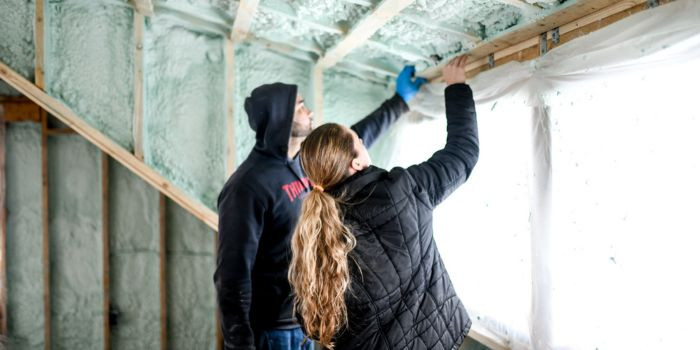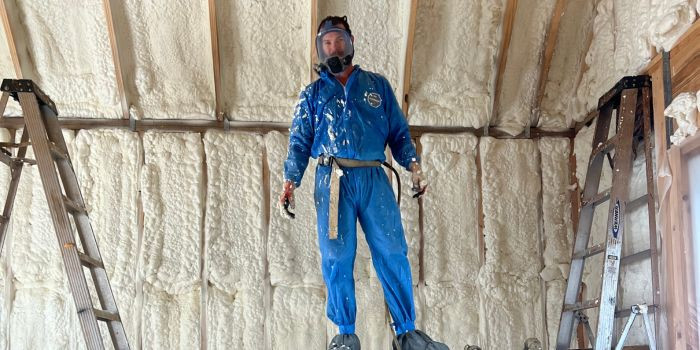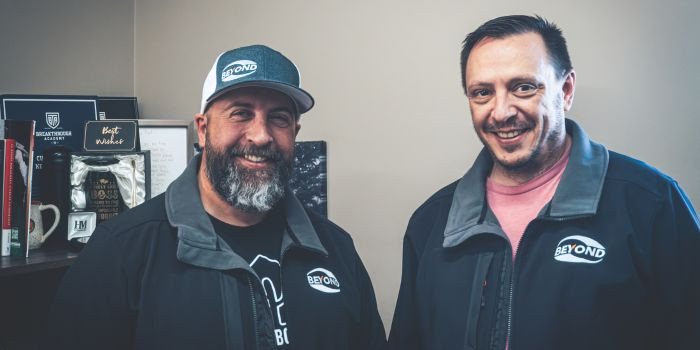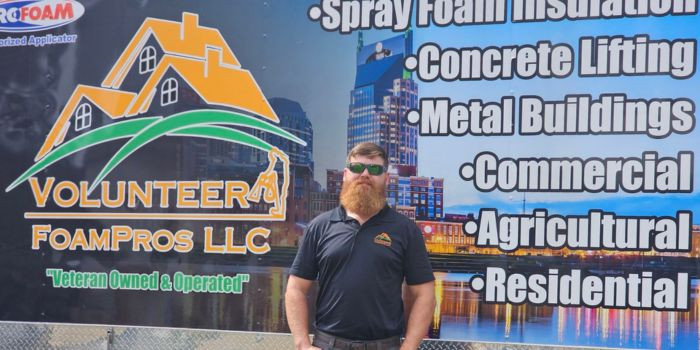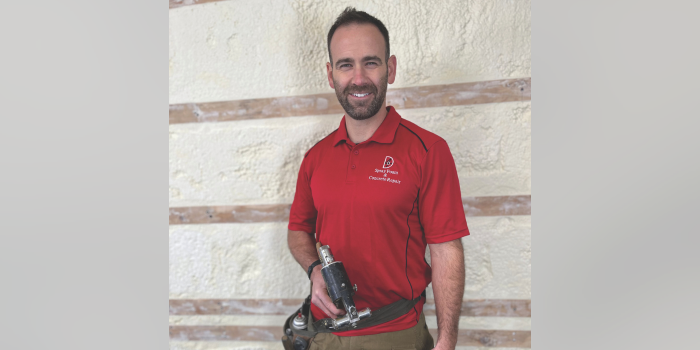The Power Duo
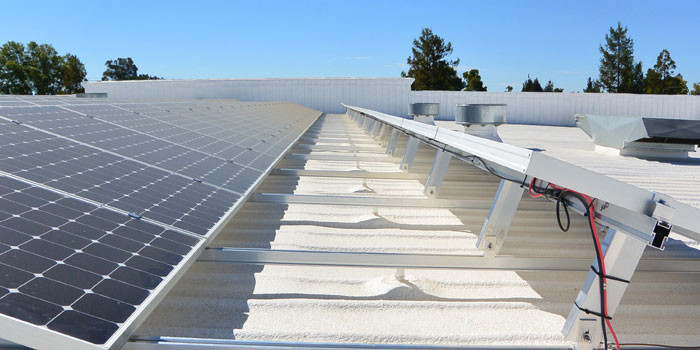

SPRAY FOAM MAGAZINE – Show Issue 2021 – Today, builders, architects, facility owners and contractors of commercial structures are all looking for ways to improve the performance of their buildings. Not only are many constructing more sustainably in general, but they are also focusing specifically on how to optimize their buildings for long-term energy savings, resistance against storms and weather events, and, ultimately to generate a good return on investment.
As knowledge and materials have improved, and building codes are becoming increasingly stringent, many are now building to achieve Zero Net Energy, or ZNE. Zero Net Energy structures, which may include both newly constructed and retrofitted buildings, generate as much (or more) renewable energy onsite as they consume. A ZNE structure therefore decreases energy costs, eliminates fossil fuel dependence, and reduces the building’s emissions and environmental footprint.
In the spray foam industry, an increasing number of us, whether contractor, manufacturer or other, have been involved in bringing a ZNE structure to fruition. Spray foam insulation has played a prominent role in many of these projects and has started to gain recognition for it. Perhaps not as widely known or discussed is the role of spray foam roofing in ZNE facilities and how it is increasingly paired with photovoltaic systems to both create and conserve energy.
SPF Roofing & Photovoltaics: A Joint Energy Solution
For obvious reasons, photovoltaic systems are commonly associated with ZNE structures. In fact, the solar component of these highly optimized facilities is often the first thing mentioned about them. But solar systems aren’t as valuable if the facility’s envelope and roof isn’t effectively sealed to ensure the best possible energy efficiency performance. The roof becomes ever important in this equation as low performing roofs, or roofs that are not energy efficient, are known to be prime locations for the escape of conditioned air.
We know that spray foam roofing shares the energy efficiency performance and benefits of its closed cell spray foam insulation sister, while also acting as an effective roofing material and boasting wind uplift resistance to boot. Lately it is becoming increasingly popular to join spray foam roofing with solar power on the roof, with the former acting as a resilient, efficiency solution and the latter as a renewable power generator. Together, this dynamic duo helps to achieve zero net energy in commercial buildings. Yet even if ZNE isn’t the end goal, the joint system provides incredible benefits to the owners and users of commercial structures of many types.
Tax Incentives and Long-Term ROI
The return-on-investment of a building with combined spray foam and solar power is significant, as the systems dramatically decrease the structure’s reliance on traditional electricity, as well as the monthly bills associated with it. With zero net energy structures, monthly energy bills are eliminated altogether.
There are meaningful tax incentives to consider as well. The Solar Investment Tax Credit has been an important federal mechanism to support the growth of solar in the U.S. While the value of the credit began to decrease from 30% in 2019 to 26% in 2020, and will be 22% in 2021, it benefits the business that installs, develops and/or finances the commercial building project claiming the credit. After 2021, the credit drops to a permanent 10% for commercial facilities, thus it behooves facility owners and managers looking to add solar to act quickly.
Another recent 2018 change to tax law offers building owners – and in some cases tenants – an opportunity to qualify for tax deductions on qualifying projects, such as roof retrofits and replacements. Changes to Section 179, allow short-term capital expenditures to be considered for a full tax write-off for the same year the investments were made. In the case of roof projects, tax code prior to 2018 depreciated capital outputs per IRS timelines, typically over 39 years. With most roofs offering a 15- to 25-year life, the timetable hurt the owner’s ability to fully deduct the roof. In addition to depreciation timetables removed, the tax changes expanded the maximum deduction and list of qualifying goods, the latter of which now includes building improvements with a lifespan of 20 years or less.
Section 179’s maximum annual deduction is $1.04 million for 2020 and the benefit phases out if the improvements exceed $2.59 million in the tax year. The deduction phases out, dollar-for-dollar, after $2.59 million is spent by a given business. Section 179 updates expire in 2025 but could change beforehand, another key incentive to upgrade roofs sooner rather than later.
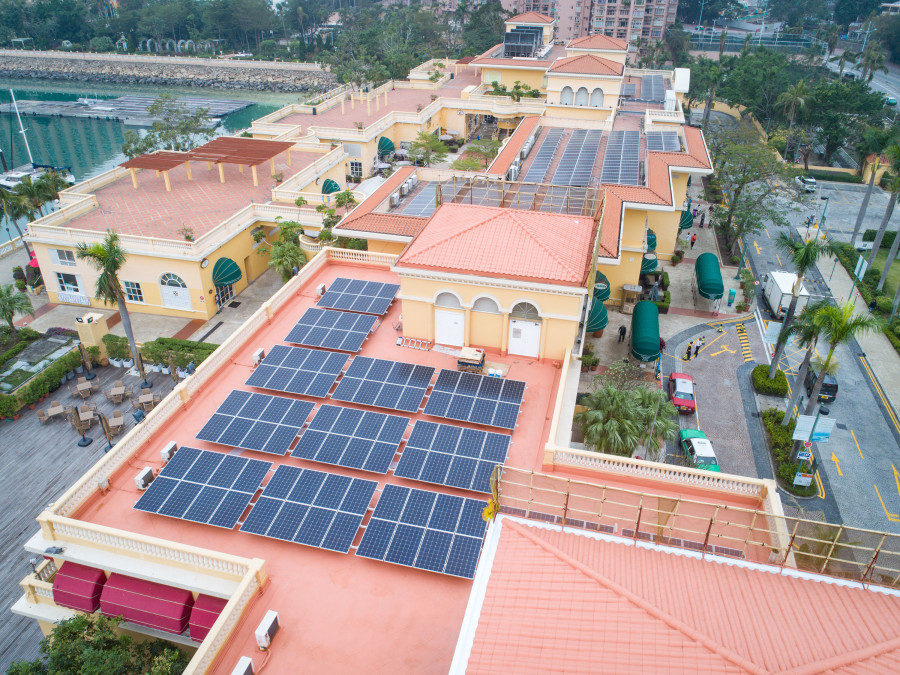
Considerations When Joining the Two Systems
When joining these two powerful systems on the roof, important factors will ensure the highest performance and lifespan. Roof systems used as platforms for PV systems must be tough and durable. Typically, SPF’s compressive strength increases as density increases, therefore higher density SPF is ideal, especially when a ballasted support system for solar will also be used.
Where possible, select SPF and solar systems with lifespans, or service life, that align. This will help to optimize the investment in both.
Spray foam roofing is covered typically with a silicone or acrylic based coating for waterproofing, UV protection and to extend its lifespan. Coating selection is therefore important. When choosing, it’s important to keep in mind the roof surface under PV panels may not dry as fast as uncovered portions. Therefore, a coating that withstands pooled water and biological growth is ideal.
The primary type of solar panel utilized in conjunction with spray foam roofing is cSi (i.e. crystalline silicon). Unlike other panel types, cSi may be applied via rack installation. This is key as it is not advised to install the PV panels directly onto the spray foam roof surface. The reason direct application is ill advised is that solar heat and water may accumulate between the PV and roof coating, decreasing the performance of the coating. Additionally, panels applied directly to a low-slope roof will usually fail to align optimally with the sun.
Ballasted, rack-mounted PV systems can be difficult to reroof, or recoat, under and around. Elevated racks with adequate space beneath may be able to be left in place when reroofing. A solar system that covers a small portion of the roof will be easier to move during reroofing than a system that covers a larger portion of the roof surface. Facility owners and managers should be advised of future reroofing and maintenance procedures, as well as costs associated with roof-mounted PV systems.
Maintenance
An SPF system will be tested during the solar system installation process. Coatings and granules can help protect the roof during installation and during on-going maintenance. Keep in mind the addition of the solar system on an SPF roof will also lead to additional foot traffic over time. Trafficked areas may be protected with additional coating and granules or walk pads.
To maintain and service both systems, each must be accessible to workers. The solar system must not block access to drains, penetrations, flashings, mechanical units or other equipment on the roof. Solar maintenance workers must also be able to access wiring, inspect panel-to-racking connections, and properly clean top surfaces without stepping on panels.
For those seeking expanded information on joining SPF and photovoltaics on the roof, the Spray Polyurethane Foam Alliance (SPFA) recently published a technical paper on the topic which is available to its members and those in the industry looking for more guidance.
While there are definite technical considerations to the combination of spray foam roofing and solar power on the roof, the benefits to the facility owner and end user are quite significant. The increasing number of applications of this dynamic energy duo on commercial facilities is proof that builders, architects and contractors have caught on.
About the Author: Dave Feitl is VP Global Roofing and Western USA SPF Sales with Huntsman Building Solutions, a leading global manufacturer of spray polyurethane foam roofing and insulation. The company’s solutions are utilized to optimize commercial and residential structures worldwide in both new construction and retrofit applications. Visit Huntsman Building Solutions at www.huntsmanbuildingsolutions.com and contact Dave Feitl at dfeitl@huntsmanbuilds.com.
*Spray Foam Magazine does not take editorial positions on particular issues; individual contributions to the magazine express the opinions of discrete authors unless explicitly labeled or otherwise stated. The inclusion of a particular piece in the magazine does not mean that individual staff members or editors concur with the editorial positions represented therein.
Disqus website name not provided.




